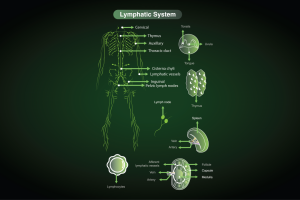Halloween is a widely celebrated festival, but how much do we know of its consequences on the public’s physical and mental health?

Musa Sattar, UK
Halloween is mainly considered ‘a harmless day of fun’; but on the contrary, a spike in pedestrian fatalities, crime incidents, and injuries are reported throughout the world at this time of year. Advice and special tips are given out by experts including psychologists, physicians, nutritionists, dentists, food regulatory agencies, emergency departments, etc. on how to keep children safe and be sensitive to the vulnerable citizens in society during this time of year.
In many communities, it has become an excuse for young people to involve themselves in acts of violence and vandalism. Halloween has always had a powerful disruptive potential that can quickly transform pleasant celebrations into spaces of threat, offence, and scandal.
Therefore, this article seeks to highlight a few potential health hazards associated with Halloween and the steps to avoid such dangers.
Trick or Treat, Vandalism, and Casualties
According to extensive research conducted by Liverpool John Moores University & Cork University Hospital over a three-year period (31st March 2008 to 30th March 2011) with 330,172 cases to English emergency departments, concluded that Halloween is associated with significant increases in assaults as compared to other major holidays and sporting events.
While trick or treating is a common activity during Halloween, there is a danger of the presence of harmful additives in popular candy. In August 2022, Drug Enforcement Administration (DEA) warned that pills containing fentanyl were being manufactured in various colors. DEA Administrator Anne Milgram said, ‘Rainbow fentanyl—fentanyl pills and powder that come in a variety of bright colors, shapes, and sizes—is a deliberate effort by drug traffickers to drive addiction amongst kids and young adults.’
In 2021 a research published in the International Journal of Environmental Research and Public Health reported a 49% increase in the risks of pediatric fatal pedestrian crashes on Halloween in the United Kingdom which echoed another study done in the United States.
Health Communication published a research in 2020 by Michigan State University, reporting that Halloween engulfs normative perceptions and behaviours that promote excessive drinking, thus increasing health and public safety risks. Among students, Halloween has been associated with excessive drinking even by those who do not ordinarily report heavy drinking.

Media, Fear, and Anxiety
During this time of the year almost all streaming services such as Netflix, Amazon Prime Video, Sky, Disney+, Apple TV+, and BBC iPlayer as well as your normal TV stream Halloween-based shows or provide a Halloween-themed playlist for both children as young as 0-2 to adults.
Dr G Neil Martin, Honorary Professor of Psychology at Regent’s University London in his research concluded that television and movies contribute to children’s feelings of fear and anxiety.
Anxiety, as explored and exploited by horror movies, never goes away: fear of dying or losing a loved one, fear of our inability to predict our fate, and (despite many antistigma efforts) fear of mental health problems, of people with such problems, and even of mental health systems and treatments. According to a study published in Australasian Psychiatry, exaggerations and misrepresentations in horror movies can lead to lasting negative impressions.[1] Another study published in 2019 in Frontiers in Psychology found that 90% of their sample of 136 young people (average age – 20.6 years) had experienced a film that was so frightening that the experience had lasted beyond the viewing of the film. More than 50% of the sample reported sleep disturbances and eating problems.
Similarly, researchers at the University of California, Cantor et al. (2010) found that the most common content causing fear in 219 8.5-year-olds was the supernatural imaginary/fictional monsters) with someone being hurt the next most common. Seventy-one percent could not stop thinking about the experience; 52% worried about it; 36% reported shaking; 59% did not want to sleep alone, and 56% had nightmares.
Exposure to violence and aggression in the media can lead to increased aggression in the long term. A research article published in the Journal of Abnormal Child Psychology concluded that Children in early childhood may be particularly at risk for the negative effects of media violence exposure when the superhero medium is emphasised.[2]
In a study published in 2021 in Journal of Pediatric Psychology showed that exposure to aggressive and violent media can result in increased aggressive behaviour. In similar studies, these effects have been shown in the short-term and long-term. Neuroscientists and cognitive psychologists posit that any cognitions, behaviours, or emotions that have ever been linked to an observed violent scene will be activated within milliseconds when that scene is observed.
Children are more likely to learn aggression from the media that strongly identify with violent characters. Identifying with victims of tragedy also enhances children’s fear responses to news stories as depicted by Barbara J. Wilson president of the University of Iowa, in her research paper ‘Media and Children’s Aggression, Fear, and Altruism’.
Clinical therapist Mike Buckley, who specialises in post-traumatic stress disorder said that certain Halloween graphic displays can trigger dramatic trauma responses that lead to immense stress for individuals suffering from anxiety disorders and PTSD.
Similarly, many case studies and research can be found reporting injuries resulting from pumpkin carvings, skin reactions from costumes, makeup and contact lenses, food allergies etc all caused by Halloween activities.

Therefore, both children and parents must understand the potential dangers that Halloween brings and the steps they can take to remain safe.
But, how can we prevent all this?
Putting an End to Halloween Risks: An Approach that Worked
His Holiness, Hazrat Mirza Masroor Ahmad (aba), Fifth Caliph and Worldwide Head of the Ahmadiyya Muslim Community, on one occasion, drew attention towards the real origins of Halloween and the consequences which following this tradition can have. He said:
‘The various practices that are associated with Halloween are no longer limited to just wearing a costume and knocking from door to door asking [for sweets], rather, some older children actively try to scare the residents of the home. Consequently, they become involved in other crimes as well. As a result, they cause disturbance and harm to the society and they also become a headache for their parents and ruin their own lives. For this reason, I once again address Ahmadis and say that they must abstain from such practices. Ahmadi children and adults alike should try to increase in their relationship with God Almighty. They should realise their true purpose, and should do what God Almighty has commanded them to. They should not let the West influence them to such a degree that they are unable to distinguish between right and wrong, that they forget about the majesty of God Almighty and their relationship with Him, and that they begin to partake in a hidden shirk.’
About the Author: Musa Sattar has an MSc in Pharmaceutical Analysis from Kingston University and also serves as the Assistant Manager of The Review of Religions and the Deputy Editor of the Science & Religion section.
ENDNOTES
[1] Susan Hatters Friedman, Fernando Espi Forcen, and John Preston Shand, “Horror Films and Psychiatry.” Australasian Psychiatry 22, no. 5 (2014): 447–49. https://doi.org/10.1177/1039856214543087.
[2] Coyne, Sarah M., Laura Stockdale, Jennifer Ruh Linder, David A. Nelson, Kevin M. Collier, and Lee W. Essig. “Pow! Boom! Kablam! Effects of Viewing Superhero Programs on Aggressive, Prosocial, and Defending Behaviors in Preschool Children.” Journal of Abnormal Child Psychology 45, no. 8 (2017): 1523–35. https://doi.org/10.1007/s10802-016-0253-6.




thanks for information